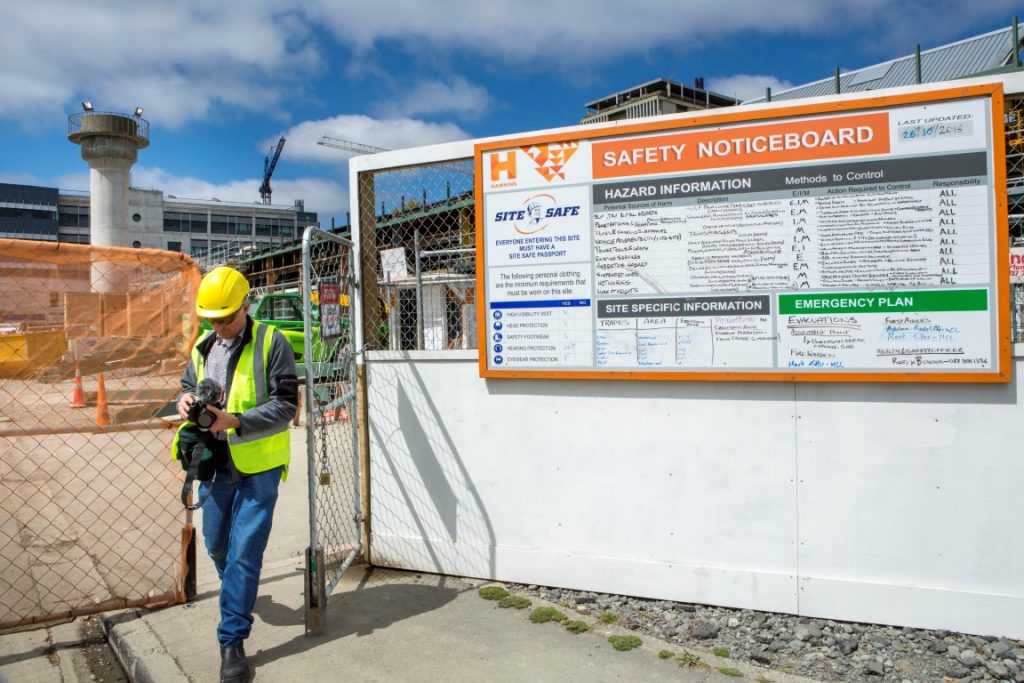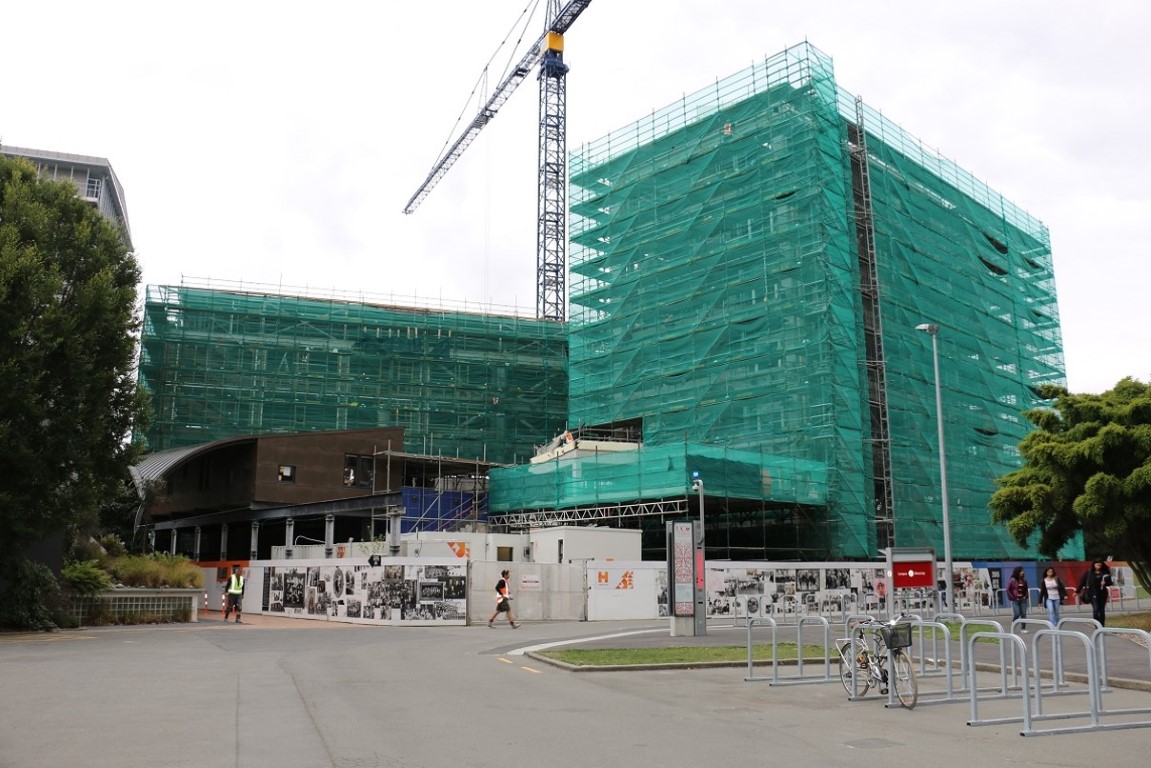
We operated a major construction programme within a live campus. At the height of the rebuild, more than 45% of campus was under construction with five sites managed by different contractors, and all the usual work of a university going on around them. In 2014, we had 12,500 full time equivalent (FTE) students, and 1,900 FTE staff.
Plus, as anyone who’s spent time on a university campus knows, apart from the usual health and safety considerations, there are student high spirits to take into account. For example, as soon as you introduce anything as appealing as a crane to a campus, it’s only a matter of time until someone decides it needs to be climbed, or to have a road cone hoisted on top of it.
As well as our legislative responsibilities, a significant injury to a student could cause serious reputational damage for the university, so we took health and safety extremely seriously, and committed additional resources to it from the outset. Over five years and numerous construction and repair projects, we had no major injuries on building sites or the wider campus. Two working groups put in place early in the rebuild contributed significantly to that result.
The Campus Construction Safety Group
We made health and safety everybody’s business by establishing a university-wide coordination group. With representatives from Facilities Management, Communications, the University Students’ Association and project teams, this Group’s brief was to take a corporate level view of health and safety, to establish organisational messages and processes, and generally to think ahead and solve potential problems before they arose.
Specific outputs included:
- Traffic management plans to ensure staff and student safety
- A campus-wide risk register
- High-profile and targeted safety signage
- Regular communication with staff and students in affected areas
- Advance warning of periods of high noise, vibration or other disruption
- Good relationships with campus neighbours and the surrounding community.

The Contractors Round Table
We also asked our contractors to take a broad view of health and safety and to collaborate on strategies and responses. This was a significant culture shift for many of them, but the effort paid off in the long run.
The Round Table met monthly bringing together representatives of the university’s Facilities Management team for a campus-wide view, and all major contractors. Each meeting began with a joint walk through of one of the sites, followed by a collective debrief on issues and solutions observed.
Over time contractors started to share new initiatives from their companies, and to discuss things that went well, as well as what went wrong, and how they responded. From this, the Round Table was able to take the lead on a series of collaborative initiatives, including:
- Standardised Protective Personal Equipment across all sites
- Consistent drug and alcohol policies
- Agreed rules for transport of materials
- Common emergency response procedures
- Shared communications for external messaging.
The benefits of this collaborative approach were acknowledged by all parties, and the protocols developed across campus and between construction sites have provided the basis for a similarly integrated approach on future projects. We learned that it is possible to manage a construction programme safely within a functioning university, and that this success can have wider benefits for the university, the contractors and the projects.
